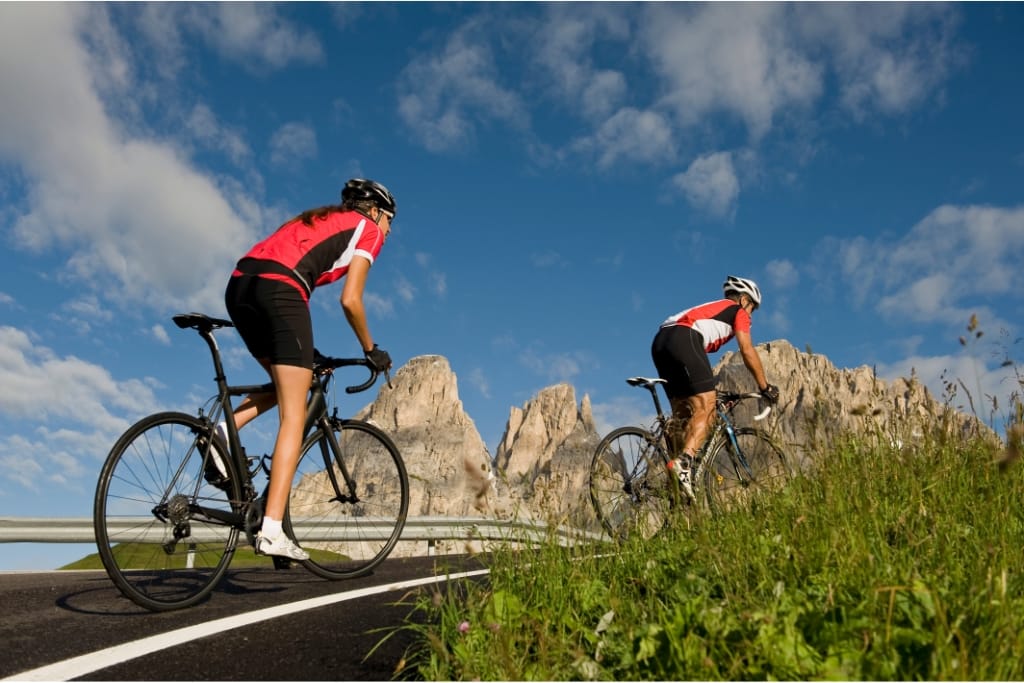Conquering hills on a bike can feel like unlocking a new level in your cycling game, pushing your limits, and building strength.
Whether tackling a steep incline or a long, gradual climb, having the right techniques can make all the difference.
With focus, preparation, and the right mindset, you can take on hills confidently and efficiently.
Read on to learn key tips that will help you climb like a seasoned pro.
1)) Choose The Right Gear
Selecting the right gear is crucial when taking on a challenging climb. Shifting into an easier gear before you start ascending helps maintain a steady cadence, reducing the strain on your legs and conserving energy for the climb ahead.
Pay attention to your pedaling rhythm and adjust your gears as needed to keep the effort manageable.
By matching your gear to the demands of the terrain, you’ll stay in control and power through the hills with greater efficiency.
2)) Maintain A Steady Pace
Keeping a steady pace is one of the most effective strategies for conquering hills efficiently.
Avoid the temptation to surge at the base of the climb, as this can lead to early fatigue.
Instead, focus on maintaining a consistent effort throughout the ascent, using your cadence and breathing to gauge your intensity.
Staying controlled and deliberate helps preserve energy while allowing you to adapt to the challenges of the terrain.
By committing to a steady rhythm, you’ll build endurance and tackle even the toughest climbs with greater ease.
3)) Focus On Your Breathing
Proper breathing techniques are essential for powering through challenging climbs.
Deep, controlled breaths supply your muscles with the oxygen they need to perform efficiently, reducing the likelihood of fatigue.
Try to breathe from your diaphragm rather than shallowly from your chest, which can help you stay relaxed and maintain a steady oxygen flow.
Syncing your breathing with your pedaling rhythm can further enhance your endurance and focus.
By mastering your breathing, you’ll be better equipped to sustain your effort and conquer hills with confidence.
4)) Optimize Your Body Posture
Proper body posture plays a critical role in efficient hill climbing. Keep your upper body relaxed and avoid unnecessary tension in your shoulders, allowing your energy to flow into your legs where it’s needed most.
Leaning slightly forward while keeping your back straight can help distribute your weight for better balance and traction, especially on steeper gradients.
Positioning your hands on the bars strategically, either on the drops or the tops, can also improve control and comfort.
By fine-tuning your posture, you’ll enhance your stability and maximize your power output to tackle climbs with greater effectiveness.
5)) Stay Light On The Saddle
Staying light on the saddle is a key technique for maintaining efficiency and control while climbing.
Shift your weight slightly off the saddle to allow your bike to move more freely beneath you, particularly on steep gradients.
This position engages your core and legs more effectively, helping to deliver consistent power to the pedals.
It also reduces the strain on your lower back and enhances traction by keeping your weight balanced.
By adopting a dynamic and fluid approach to your saddle position, you’ll maintain momentum and tackle climbs with greater ease.
6)) Use Your Core Effectively
Engaging your core effectively is essential for maintaining stability and power during hill climbs.
Your core muscles act as a foundation, helping to transfer energy efficiently from your upper body to your legs.
Focus on tightening your abdominal muscles without holding your breath, creating a solid and controlled movement.
A strong core also helps reduce unnecessary swaying, ensuring your energy is directed straight into the pedals.
By actively using your core, you’ll improve your climbing form and enhance your overall capability to conquer challenging ascents.
7)) Conserve Energy Wisely
Conserving energy wisely is essential for tackling long or demanding climbs. Start by pacing yourself and avoiding the temptation to expend all your strength early in the ascent.
Efficient pedal strokes and smooth transitions between gears will help you preserve energy without wasting unnecessary effort.
Pay attention to your body’s signals, staying mindful of when to push harder and when to ease off to maintain a sustainable effort.
Proper hydration and fueling also play a critical role in keeping your energy reserves topped up.
By managing your energy carefully, you’ll be able to sustain your performance and reach the summit with strength to spare.
8)) Build Strength With Intervals
Interval training is a powerful method for building strength and improving your climbing performance.
Incorporate short bursts of high-intensity effort followed by periods of active recovery into your training routine.
These bursts can simulate the demands of steep climbs, training your muscles to respond with power and efficiency.
Gradually increasing the intensity and duration of these intervals over time will help you develop greater endurance and explosive strength.
By consistently including intervals in your workouts, you’ll prepare your body to handle the rigors of challenging ascents and tackle climbs with improved confidence and resilience.
9)) Stay Mentally Focused
Maintaining mental focus is crucial for successfully navigating tough climbs.
Visualize yourself reaching the top and breaking the climb into smaller, more manageable segments to avoid feeling overwhelmed.
Use positive self-talk to stay motivated and push through moments of doubt or fatigue.
Concentrate on your breathing, pedal strokes, and body posture to remain present and steady.
By cultivating a strong and determined mindset, you can overcome challenges and approach every ascent with clarity and confidence.
10)) Practice Regularly
Regular practice is the foundation for becoming a stronger and more efficient climber.
Make climbing a consistent part of your training routine to build strength, endurance, and confidence over time.
Focus on gradual improvements, such as increasing the steepness or duration of your climbs, while ensuring proper recovery between sessions.
Practicing regularly also allows you to refine your techniques, experiment with pacing strategies, and familiarize yourself with different types of terrain.
By committing to steady and purposeful practice, you will steadily enhance your climbing ability and approach every hill with greater skill and assurance.
Pro-Tip: Incorporating a home gym and a stationary upright bike into your training routine can significantly enhance your strength and stamina for uphill cycling.
A stationary bike allows you to simulate climbs by adjusting resistance levels, helping you build leg strength and endurance in a controlled environment.
You can focus on interval workouts to mimic the demands of steep ascents.
Complementing this with strength training exercises, such as squats and lunges, in your home gym fortifies your core and lower body muscles.
This combination prepares your body to tackle challenging climbs with greater power, efficiency, and resilience, no matter the conditions.
Conclusion
Mastering climbing involves a combination of technique, physical preparation, and mental resilience.
By incorporating practices like staying light on the saddle, engaging your core, conserving energy, and building strength through intervals, you equip yourself with the tools needed to tackle any ascent.
Staying focused and practicing regularly not only sharpens your skills but also builds the confidence necessary to face even the steepest challenges.
With dedication and strategy, every climb becomes an opportunity to grow stronger and achieve new heights.
Download Our Free E-book!







